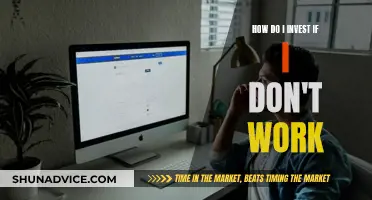
Buying a house in your 20s can be a good investment, but it's not a decision to be taken lightly. Here are some of the pros and cons of buying a house at this stage in your life.
Downsides to buying a house in your 20s
- Buying a house means staying put. When you rent, you can move more freely, but when buying a house, you should plan on staying put for at least three to five years so as to maximize the chances that you'll recoup the initial purchase and closing costs before selling.
- Buying a house means having less free time. Most home buyers spend more time maintaining and improving their homes than they did with their rentals. There's no landlord to call when the toilet leaks.
- Homeownership costs go beyond the mortgage payment. Buying involves additional costs, including homeowners' insurance, property taxes, maintenance and repairs, and redecorating.
Upsides to buying a house in your 20s
- Homeowners can personalize and customize their space. You'll have no rental agreement that prohibits you from tearing out a wall, changing the bathroom tile, or getting a pet. And of course, any improvements you make might increase the value of your property.
- Increased property value is all yours. Over time, the value of homes tends to increase, and when you sell, any return on your investment is yours, not your landlord's, to keep.
- Eventually, you won't have a monthly payment. One of the biggest benefits of buying real estate is that, unlike with renting, you can eventually pay off your mortgage. Or, you'll be able to use the equity to buy your next house, and eventually pay that one off.
- You're allowed certain tax benefits. If you itemize on your income taxes, you can deduct all or a portion of your mortgage interest and property taxes. And if and when you sell at a profit, there's a big exclusion in place to reduce your capital gains tax debt, making real estate a highly advantageous investment.
Requirements to buy a house
- Down payment: For government-backed mortgages, 0% to 3% may be acceptable on a mortgage for a primary residence, but borrowers for investment real estate generally have to put 15% to 25% down.
- Credit score: A minimum score of 620, with better rates and terms for scores of 740 and higher.
- Debt-to-income ratio (DTI): Lenders will generally allow you to count up to 75% of your expected rental income toward your DTI.
- Savings: Borrowers should have cash available to cover three to six months of mortgage payments, including principal, interest, taxes, and insurance.
What to consider before buying a house in your 20s
- How established are you in your job? Do you expect to be there long? Could your career take you out of the area, therefore requiring a move?
- How much do you make? How much of your after-tax income could you afford to put toward housing?
- Is marriage in your future? Kids or pets? Can you afford a home that will accommodate those changes?
- What are mortgage interest rates at right now? Would it be better to wait until rates drop, making your monthly payment more affordable?
- What are the housing market conditions in your area? Are home values rising? Are prices still affordable?
- Your time commitment: Owning a home requires a little more hands-on attention than renting, and you no longer have a landlord to make repairs (or foot the bill for them). Make sure you’re ready to take on all that comes with homeownership before moving forward.
Steps to take before buying a house in your 20s
1. Prepare your credit and finances: Work on your credit score, start paying down your debts, and cut out unnecessary expenses.
2. Minimize your down payment and closing costs: Choose a low-down payment loan, apply for down payment assistance programs and grants, and look into closing cost assistance.
3. Find the right home: Set up alerts on the major listing sites, consider working with a real estate agent, and have a list of must-haves and nice-to-haves when touring homes.
4. Get your mortgage lined up: Find the right lender, get pre-approved, complete your full mortgage application and lock in your rate, and communicate with your loan officer often.
| Characteristics | Values |
|---|---|
| Minimum age to buy a house | 18 |
| Down payment | 0% for USDA loans |
| 0% for VA loans | |
| 3% for conventional loans | |
| 20% for conventional loans without private mortgage insurance (PMI) | |
| Credit score | 580 for FHA loans with 3.5% down |
| 580 to 620 for VA loans | |
| 620 for conventional loans | |
| Debt-to-income ratio (DTI) | Conventional loans: up to 43% |
| FHA loans: 43% | |
| VA loans: 41% | |
| Closing costs | 2-5% of the loan amount |
| Time commitment | High |
| Carrying costs | High |
What You'll Learn

Know the housing market trends
Knowing the housing market trends is essential when buying a house for investment purposes at 27 years old. Here are some insights into the housing market trends to help guide your decision:
- Mortgage Rates and Home Prices: As of June 2024, mortgage rates remain high, with the average rate for a 30-year fixed mortgage at 7.03%. Home prices have also been soaring, with the median price for existing homes reaching a record high of $419,300. These factors pose financial challenges for potential homebuyers, making it crucial to monitor market trends and expert predictions.
- Seasonal Patterns: Historically, the third quarter of the year marks the end of the prime real estate season as summer turns into fall. However, the COVID-19 pandemic has disrupted typical seasonal patterns, with home sales peaking in the first quarter and then declining throughout the rest of the year. It's essential to consider how these shifts might impact your investment plans.
- Inventory and Competition: The housing market continues to face a shortage of inventory, with supply struggling to meet demand. This situation fuels competition among buyers, especially at the entry level, where there is a scarcity of properties. Keep a close eye on inventory levels and be prepared for a competitive market.
- Regional Variations: Housing market trends can vary significantly across regions and even within specific neighborhoods. It's important to focus on the state-level and regional reports to understand the dynamics of the local market you're interested in. This granular insight will help you make more informed investment decisions.
- Economic Indicators: Keep track of key economic indicators that reflect the state of the housing market. These include construction spending, residential construction data, and existing home sales reports. Monitoring these indicators will help you gauge the overall health of the housing market and make more strategic investment choices.
- Expert Predictions: Stay informed about expert predictions and forecasts for the housing market. While predictions may vary, they can provide valuable insights into potential shifts in mortgage rates, home prices, and overall market conditions. Use these insights to inform your investment strategy and timing.
Weighing the Benefits: Evaluating a Costly Equipment Investment
You may want to see also

Understand the costs
When buying a house for investment purposes, it is important to understand the costs involved. Here are some key points to consider:
- Down Payment and Closing Costs: When buying a house, you will typically need to make a down payment, which is a percentage of the purchase price. The amount of the down payment can vary depending on the loan program and lender, but it is usually between 0% and 20% of the total cost. In addition to the down payment, you will also need to pay closing costs, which can range from 2% to 5% of the loan amount. These costs cover administrative and legal services required to finalize the loan.
- Mortgage Payments: As a homeowner, you will need to make regular mortgage payments, which include principal, interest, taxes, and insurance (PITI). It is important to ensure that you can afford these payments, along with your other monthly expenses.
- Maintenance and Repair Costs: Owning a home comes with ongoing maintenance and repair costs. You will be responsible for fixing any issues that arise, such as leaky roofs, broken appliances, or damaged siding. It is a good idea to have an emergency fund to cover unexpected expenses.
- Property Taxes and Homeowners Insurance: In addition to your mortgage payments, you will also need to pay property taxes and homeowners insurance. These costs can vary depending on the location and value of the property.
- Utilities and Other Expenses: As a homeowner, you will be responsible for paying utilities, such as electricity, water, and gas. There may also be additional expenses, such as HOA dues or private mortgage insurance (PMI).
- Furniture and Decorating Costs: When you buy a new home, you may need to purchase furniture and decorate the space to make it your own. These costs can add up quickly, so it is important to budget for them.
- Opportunity Costs: Buying a house means committing to a long-term investment. You may need to stay in the home for several years to recoup your initial costs and make a profit. This can impact your flexibility to move or make other financial decisions.
- Transaction Costs: When you eventually sell the property, you will need to pay transaction costs, such as realtor commissions and closing costs. These costs can eat into your profits, so it is important to factor them into your calculations.
Presidential Election Outcomes: Navigating the Investing Landscape
You may want to see also

Plan for maintenance
When buying a house as an investment, it's important to have a realistic maintenance budget to avoid losing money or creating an unsafe environment for residents. Here are some tips for planning maintenance for an investment property:
Know the Rules of Thumb for Maintenance Costs
There are several rules of thumb that can help estimate rental property maintenance expenses over the course of the year. While these approaches differ, they result in similar numbers, and the goal is to ensure you have enough money set aside for both routine maintenance and unexpected emergencies. Here are some rules to consider:
- 50% Rule: Set aside half of your rental income each month for repairs, maintenance, taxes, insurance, and other costs related to your property.
- 1% Rule: Maintenance will cost about 1% of the property value per year. For example, if a unit is valued at $250,000, maintenance will cost around $2,500.
- Square Footage Rule: Set aside $1 per square foot for annual maintenance costs. For instance, a 2,000 square-foot rental will need $2,000 in maintenance costs per year.
Plan for Major Projects in Advance
While you can't plan for everything, there are known expenses that you can anticipate and budget for. For example, exterior paint usually lasts between four and ten years, and a roof typically needs to be replaced every 15-25 years. Look ahead and determine which major projects are most important, such as replacing the HVAC system or repaving the driveway. Start planning and budgeting for these projects a few years in advance, depending on the age, type of property, and market demands.
Identify Which Repairs You Can Handle In-House
Know which repairs your team can handle and which ones you need to outsource. Remember that the cost isn't just monetary; it's also the time and expertise required to complete the repair properly. Residents won't be happy if a repair takes much longer than expected because it was done in-house to save money.
Keep Your Rental Property Maintenance Expenses Organized
The longer you manage a property, the better you'll understand the maintenance expenses. The history of repairs and maintenance will help you anticipate future costs. Use a property maintenance solution to monitor expenses, oversee service requests, manage work orders, and gain visibility into the performance of in-house maintenance technicians.
Create a Custom Budget for Each Property
Every rental property is unique in terms of amenities, age, and location, which calls for a custom maintenance budget. Older properties may require more frequent repairs, while newer ones might be less maintenance-intensive. Create a budget specifically for each property in your portfolio to ensure accurate allocations and financial planning. This tailored approach will help you avoid overestimating or underestimating costs, leading to a more profitable and smooth-running rental operation.
Mortgage or Market: Navigating Your Finances in a Recession
You may want to see also

Consider the return on investment (ROI)
When considering the return on investment (ROI) for a property, there are several factors to take into account. ROI is a metric used to evaluate the efficiency or profitability of an investment, and it is expressed as a percentage.
The basic ROI calculation is:
Sale Price of Investment – Cost of Investment) / Cost of Investment
When calculating the ROI for a rental property, it is important to first estimate the annual rental income and annual operating expenses, which would include the costs of maintenance, property taxes, utilities, and other ongoing costs.
There are two primary methods for calculating ROI: the cost method and the out-of-pocket method. The cost method calculates ROI by dividing the investment gain in a property by that property's initial costs. The out-of-pocket method, which often results in a higher ROI, takes the current equity of the home divided by the current market value.
In addition to the purchase price of the property, other costs that can impact the ROI include:
- Closing costs: These are the fees paid during the buying and selling process, which can add up to thousands of dollars.
- Interest rates: Higher interest rates can depress the real estate market as demand falls.
- Location: The property's location can impact its value, with highly trafficked areas or desirable neighbourhoods typically commanding higher prices.
- Construction material costs: Renovations become more expensive when the cost of materials and labour is high.
- Type of property: Affluent properties may generate lower rental returns compared to cheaper homes.
It is also important to consider the opportunity cost of investing in real estate, as ROI does not take into account the time frame or potential gains from investing elsewhere.
When buying a house for investment purposes at 27 years old, it is crucial to weigh the potential ROI against other factors. These may include your financial situation, lifestyle choices, and long-term goals. It is generally recommended to stay in a property for at least five years to maximize the chances of recouping the initial costs. Additionally, there may be tax implications to consider, as well as the ongoing costs of maintenance, repairs, and property management.
Overall, when evaluating the ROI for a property, it is essential to carefully assess all the relevant factors and make an informed decision based on your specific circumstances and goals.
Designer Bags: Fashionable Investment or Money Pit?
You may want to see also

Be aware of the time commitment
When buying a house for investment purposes, it's important to be aware of the time commitment involved. Here are some key points to consider:
- Location and Research: Before investing in a property, it's crucial to research the area thoroughly. Look into factors such as the strength of the location, rental yields, demand, and potential for capital growth. Consider areas with positive predictions for price growth and a proven record of investment success. This research will help you determine the type of property to purchase, whether it's a house or an apartment, and whether it's located in an urban or rural area.
- Ideal Tenant: Defining your ideal tenant will help you make informed decisions about the type of property to buy and its location. For example, if you're targeting young professionals, ensure there are good transport links, or if you're aiming for families, look for properties near schools.
- Property Types: There are various property types to consider for investment purposes, such as off-plan properties, which are bought before completion and offer potential for capital growth and lower costs. Refurbished properties, which are often historical buildings renovated to modern standards, can be appealing for their charm and character. Residential properties are also in high demand due to rising house prices, and student properties can be a good investment due to increasing rental yields and demand.
- Buy-to-Let Mortgages: If you're considering investing in a house or apartment, you may be eligible for a buy-to-let mortgage. However, there are conditions to meet, such as understanding the risks, having a good credit history, and earning a certain income. These mortgages tend to be more expensive, with higher interest rates and larger deposits.
- Time Commitment: Buying an investment property requires a significant time commitment. You'll need to spend time choosing the right property, preparing it for tenants, and managing the ongoing maintenance. Be prepared to spend time fixing issues, arranging repairs, and handling tenant-related matters.
- Financial Considerations: Investing in a property comes with various financial considerations. Be aware of the higher stamp duty for a property that is not your main home, as well as capital gains tax and income tax implications. Factor in costs such as rent, landlord insurance, letting agent fees, and maintenance.
Retirement Planning: The Perils of Starting Too Soon
You may want to see also







